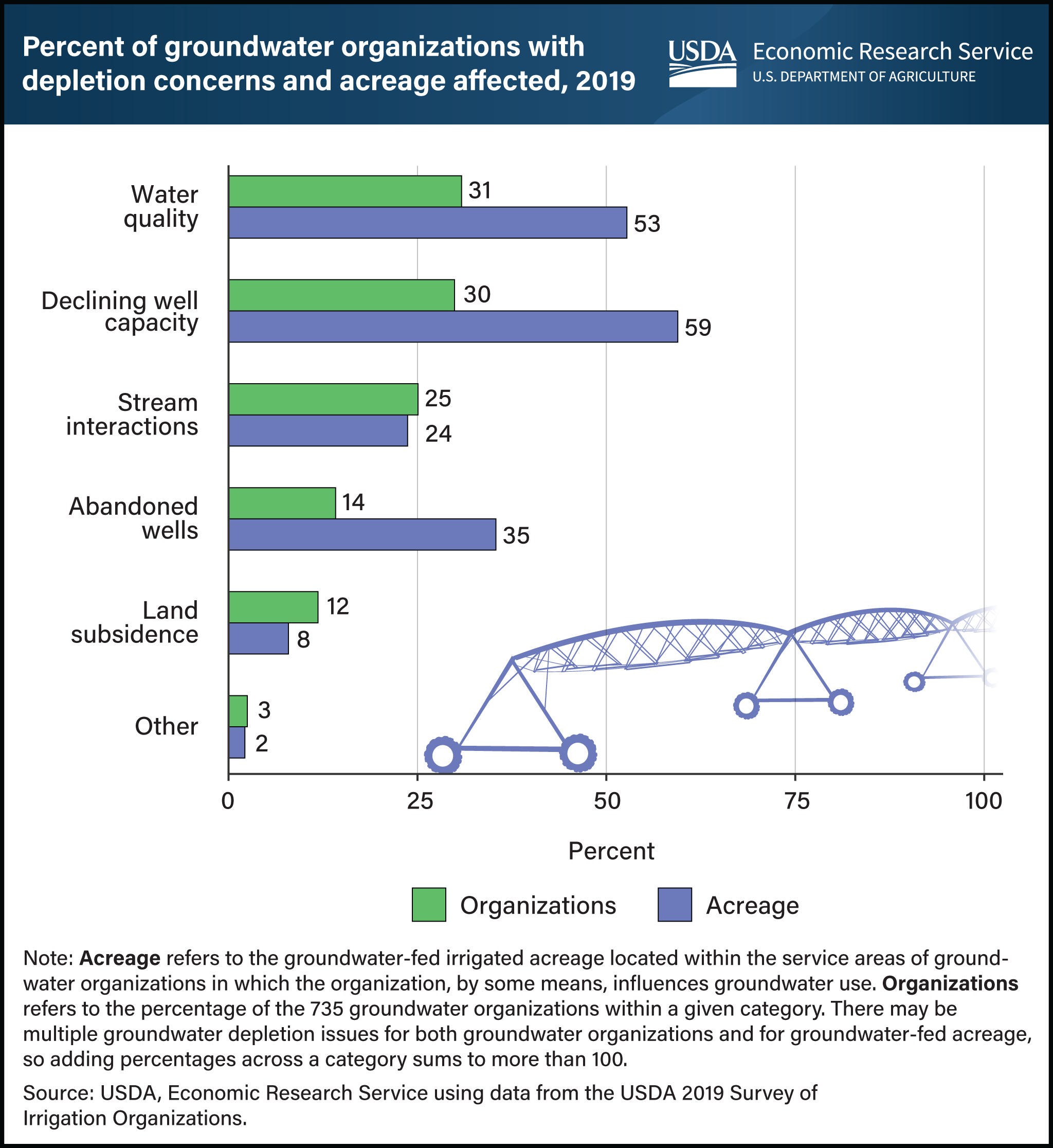Degraded water quality, declining well capacity affect many groundwater organizations
- by R. Aaron Hrozencik
- 4/19/2023

The top two concerns raised by groundwater organizations related to groundwater depletion are degraded water quality and declining well capacity. Groundwater organizations are the local entities that influence on-farm groundwater use through statutory, regulatory, or other powers. In the United States, there are an estimated 735 such organizations that manage roughly 60 percent of all groundwater-fed irrigated acreage in the country. A national survey of these organizations found that 31 percent of them reported degraded water quality and 30 percent reported declining well capacity in 2019 as groundwater depletion concerns. These two issues affect about 53 and 59 percent of the acreage within organization service areas, respectively. When groundwater pumping exceeds the volume of groundwater recharge, the quality and quantity of the remaining water declines. For example, saltwater intrusion caused by groundwater depletion is a concern for many coastal and inland aquifers, since high salinity levels can hinder the growth of most common crops. Well capacity is another important groundwater depletion concern, since it limits the amount of water that can be applied to a crop within a given time, which can reduce irrigated crop yields and farm profits. Groundwater depletion has affected several of the nation’s most economically important aquifers, including the High Plains (Ogallala) and Central Valley aquifers. Additionally, 14 percent of groundwater organizations reported abandoned wells as an issue and 25 percent reported stream interaction issues, in which depleted groundwater can reduce streamflow and harm associated ecosystems. This chart appears in the Economic Research Service economic brief Irrigation Organizations: Groundwater Management, published in April 2023.


